2016 ANFF-VIC Technology Fellow Ambassadorships Announced
The core mission of ANFF-VIC and its principal facility, the Melbourne Centre for Nanofabrication (MCN), is to facilitate the integration of micro and nanotechnologies into the R&D activities that support Australian innovation and manufacturing by providing open-access to state of the art instrumentation, training and support.
It was with this mission in mind that MCN launched the first Technology Fellowship program in 2011. Fellows were selected from a broad range of disciplines, each with their own unique demands for micro/nanotechnology, and were given free access to the centre’s considerable resources in exchange for acknowledgment of the facility within their published work and making themselves available as a consulting resource for users, staff and industry. The program was a great success.
This year, the program's fourth instalment, Fellows were asked to propose — in addition to their core research projects —in-kind cooperative process development activities reflecting the current and emerging needs of the user community in their respective fields. They were asked to serve as champions for MCN/ANFF-VIC at their home institutions and in their travels and to take an active role in helping to guide the broader strategic and scientific direction of the node.
On behalf of ANFF-VIC, we are pleased to announce the recipients of this year's Technology Ambassador Fellowships:

Prof Udo Bach
Department of Materials Science and Engineering
Monash University, Clayton
Prof Bach’s joint Monash/CSIRO research team has a strong interest in solution-processable photovoltaics and general aspects of bottom-up nanofabrication. Their team has developed photolithography-based processes for the fabrication of interdigitated electrode arrays, which are of interest for optoelectronic applications, sensors and for basic materials characterization. Other processes of interest to Prof Bach’s team are kelvin-probe microscopy, atomic layer deposition, nanoimprint lithography and electron beam lithography. In-kind process development projects proposed in Prof Bach’s application will focus primarily on development of novel atomic layer deposition ferroelectric and charge selective thin films.
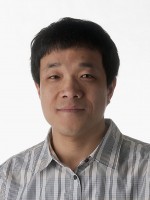
Prof Wenlong Cheng
Department of Chemical Engineering
Monash University
Prof Wenlong Cheng’s nanobionics lab interests primarily concern nano-bio interfaces, specifically soft optoelectronic and plasmonic sheets, wearable electronic skins, soft energy devices and targeted theranostics. Through the Tech Ambassador program, Prof Cheng plans to work closely with MCN staff to develop new processes for fabrication of ultrathin plasmonic nanosheets by combining bottom-up self-assembly with top-down lithography. His team will also drive development of new lithographic processes at MCN to meet the current and emerging needs in the fields of wearable electronics and soft plasmonics.

Dr Daniel Gomez
ARC Future Fellow
CSIRO – Manufacturing Business Unit
The overarching aim of Dr Gomez’s research is to demonstrate, study and optmise the direct conversion of light to chemical energy via plasmonic photocatalysis, i.e., the use of metal nanoparticles for enhancement of light energy capture, charge separation and charge transfer at chemical interfaces. His research asks three fundamentally interconnected questions: (1) What is the relationship between the optical properties of metal nanoparticles and their ability to enhance photocatalytic processes? (2) How do we best extract so called “hot electrons” from metal nanoparticles? (3) How can we use this information to make more efficient plasmonic photocatalysts at relevant scales? Dr Gomez’s in-kind development activities are focused on fabrication of novel metal and metal oxide nanostructures using electron beam lithography and reactive sputtering
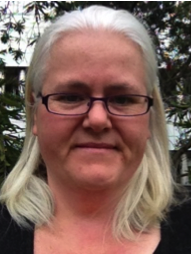
Fiona Glenn
CSIRO – Manufacturing Business Unit
Currently Fiona’s research is focused on development of novel electrochemical sensors for measuring important biomarkers in early-stage human embryonic development. Through use of animal models, her team is refining this technology with the aim of improving IVF patient outcomes. Beyond the sensors themselves, Fiona's is interested in “whole package” development, including design and fabrication of complementary microfluidic architectures, electronic interfacing and system integration. Proposed in-kind process development activities work will span a wide array of instruments and disciplines from basic photolithography and sputtering to microfluidic device fabrication. Fiona also bring with her over 20 years of experience in the area of electroforming, specifically, mastering of micro and nano patterns in gold and nickel.
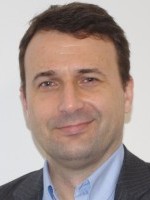
Prof Saulius Juodkazis
Centre for Micro-Photonics
Swinburne University of Technology
Prof Juodkazis is interested in developing of novel optical control applications for micro and nanotechnology. His team designs and fabricates novel micro/nano optical elements that twist and re-structure light beams in three-dimensions (optical vortices) to selectively control objects possessing complementary geometries. By combining techniques such as focused ion beam milling, reactive ion etching, sputtering, electron beam lithography, team of Prof Juodkazis aims to extend the current capability and efficiency of optical manipulation methods using visible through to terahertz (T-ray) wavelengths. His in-kind work will include development of new processes for the recently installed Nanofrazor scanning-probe lithography system, photoactive resin development for 3D-SLA printing, and femtosecond laser direct-write patterning.
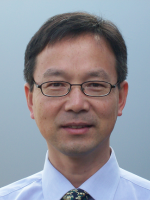
Prof Lingxue Kong
Institute for Frontier Materials (IFM)
Deakin University
With aggressive infectious agents, a key challenge in ensuring effective treatment and limiting transmission, is minimising the time delay of diagnostic testing. For this reason, Prof Lingxue Kong is chiefly interested in molecular sensing methods and developing technologies for rapid diagnosis at the point of care as these methods give good specificity and are significantly faster than conventional culture techniques. Lingxue’s work aims to: (1) Develop standard thermo stabilised PCR test kits with intrinsic controls, (2) Design and fabricate alternative PCR amplification devices that are efficient, rapid and low cost, (3) Reduce sample reagent volume by 75% to further reduce the cost of testing by utilising the latest advancements in microfluidics technology, and (4) Develop and incorporate new detection systems by selective surface functionalization within microfluidic networks. Prof Kong’s in-kind contributions will similarly deal primarily with establishing standard processes for fabrication and operation of microfluidics.
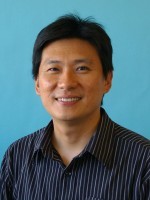
Prof Peter Vee Sin Lee
Department of Mechanical Engineering
University of Melbourne
Impediments to drug development success can be overcome by appropriately configured tissue‐on‐a‐ chip technology. Prof Peter Vee Sin Lee’s work aims to improve drug screening technology from the current dominant paradigm of 2D cell culture on rigid plastic substrates to microfluidics environments designed to impose compressive, tensile and shear forces on 3D cell spheroids, closely emulating physiological conditions for the purposes of improving drug screening.
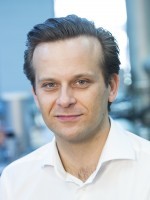
Dr Grant van Riessen
Institute for Molecular Science
La Trobe University
Dr van Riessen’s group focuses on the development of novel diffractive optics and functional devices for in situ and operando spectromicroscopy and crystallography applications using synchrotron radiation. His team’s work within ANFF-VIC will emphasise development of new methods for three-dimensional patterning based on electron beam lithography and thermal scanning probe lithography in order to overcome existing limitations in efficiency, spatial resolution and control of specimen environments. Following form this work, it is envisaged that a range of thin-film deposition and patterning processes can be exploited to advance research programs in plasmonics and diamond-based spintronic devices in collaboration with specialist groups at La Trobe University.
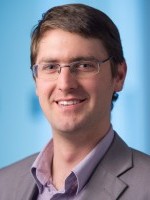
Dr Alastair Stacey
School of Physics
University of Melbourne
Diamond is a supermaterial with a range of superlative properties and the Melbourne Centre for Nanofabrication hosts two state-of-the-art diamond synthesis reactors. Dr Stacey is a world leader in the synthesis and study of novel diamond materials for a variety of applications such as ultra-pure growth, surface treatments and hermitic sealing for electronics and bionic implantation, and quantum sensing and computing. In addition to his core research Dr Stacey intends to focus his in-kind activity primarily on developing awareness of the potential applications of diamond within the broader Australian research community.


